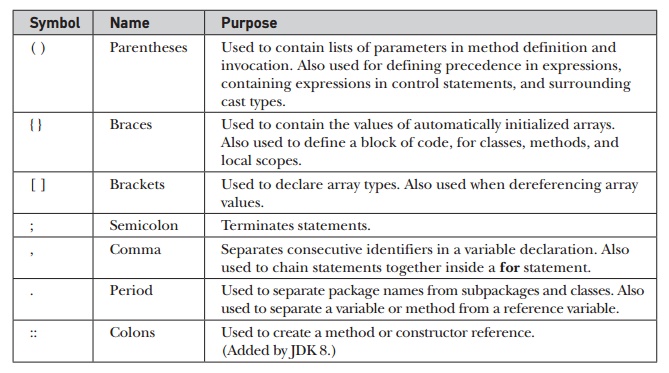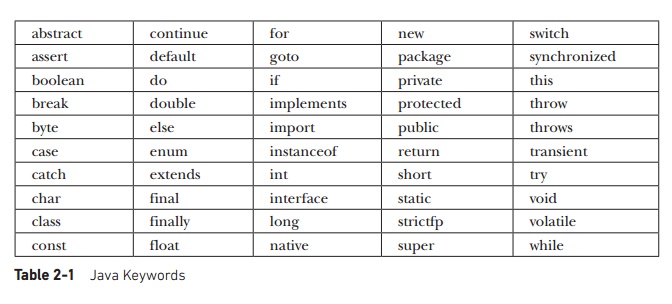Chapter: Java The Complete Reference : The Java Language : An Overview of Java
Lexical Issues
Lexical
Issues
Now that you have seen
several short Java programs, it is time to more formally describe the atomic
elements of Java. Java programs are a collection of whitespace, identifiers,
literals, comments, operators, separators, and keywords. The operators are
described in the next chapter. The others are described next.
Whitespace
Java is a free-form language.
This means that you do not need to follow any special indentation rules. For
instance, the Example program could
have been written all on one line or in any other strange way you felt like
typing it, as long as there was at least one whitespace character between each
token that was not already delineated by an operator or separator. In Java,
whitespace is a space, tab, or newline.
Identifiers
Identifiers are used to name
things, such as classes, variables, and methods. An identifier may be any
descriptive sequence of uppercase and lowercase letters, numbers, or the
underscore and dollar-sign characters. (The dollar-sign character is not
intended for general use.) They must not begin with a number, lest they be
confused with a numeric literal. Again, Java is case-sensitive, so VALUE is a different identifier than Value. Some examples of valid
identifiers are

Literals
A constant value in Java is
created by using a literal
representation of it. For example, here are some literals:

Left to right, the first
literal specifies an integer, the next is a floating-point value, the third is
a character constant, and the last is a string. A literal can be used anywhere
a value of its type is allowed.
Comments
As mentioned, there are three
types of comments defined by Java. You have already seen two: single-line and
multiline. The third type is called a documentation
comment. This type of comment is used to produce an HTML file that
documents your program. The documentation comment begins with a /** and ends
with a */. Documentation comments are explained in the Appendix.
Separators
In Java, there are a few
characters that are used as separators. The most commonly used separator in
Java is the semicolon. As you have seen, it is used to terminate statements.
The separators are shown in the following table:

The
Java Keywords
There are 50 keywords
currently defined in the Java language (see Table 2-1). These keywords,
combined with the syntax of the operators and separators, form the foundation

of the Java language. These
keywords cannot be used as identifiers. Thus, they cannot be used as names for
a variable, class, or method.
The
keywords const and goto are reserved but not used. In the
early days of Java, several other keywords were reserved for possible future
use. However, the current specification for Java defines only the keywords
shown in Table 2-1.
In
addition to the keywords, Java reserves the following: true, false, and null. These are values defined by Java.
You may not use these words for the names of variables, classes, and so on.
Related Topics